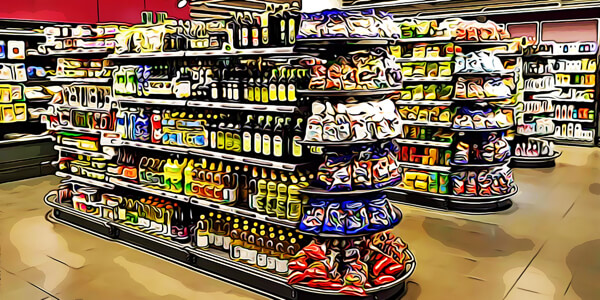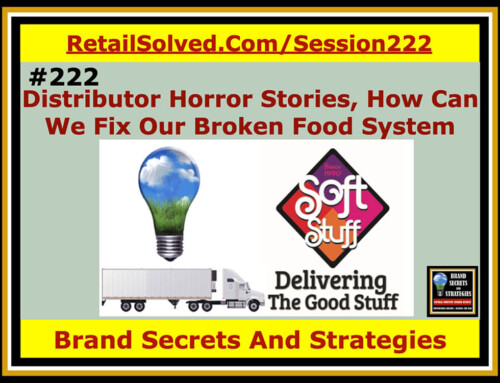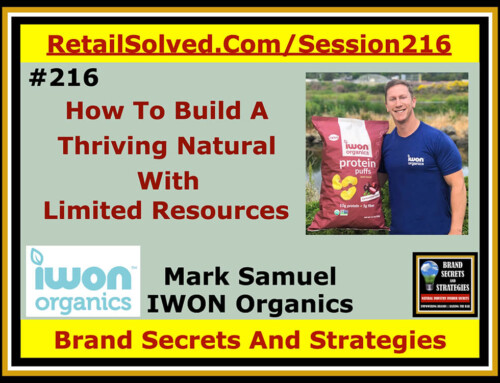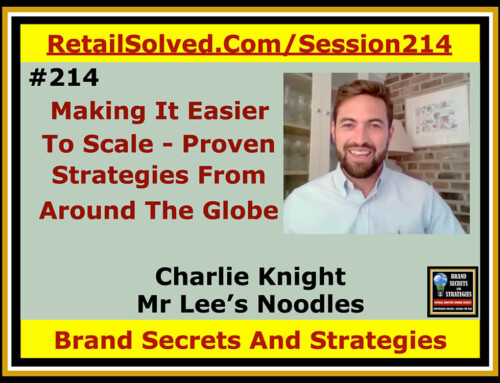Shoppers can’t buy what they can’t find. Seems obvious but most brands fail to make it easy for shoppers to find their products on retailer’s shelves, even with a single chain. This includes the way they are merchandised and the stores they are sold in. Both are critical to every brand’s success.
We’ve all been told that when it comes to buying a home or searching for a store that the most important criteria is location, location, location. The same holds true for every brand, especially natural organic brands. A brand’s consistent shelf presence is the most important aspect of every brand’s marketing strategy. Remember, nothing happens until something is sold.
You worked hard to create a product that consumers want. Now you need to get your products on retailer’s shelves (gain distribution). No two stores are alike and every store caters to different audiences, the shoppers they sell to. Identifying the key retailers to build your distribution is the secret, or blueprint, for your success. So, how do you choose the right stores to focus on as you build distribution?
These decisions need to be made by the brand and not delegated to your broker or distributor. Listen to their advice, however, brands need to ultimately choose the store where they have the best chance to succeed and grow sales in.
Identify your core consumer
The first thing you need to do is to identify who your core consumers are, not just your target customer, but who is most likely to purchase your products. Trying to sell a premium specialty product to a shopper focused on the lowest price possible will be an uphill battle that could result in failure. What is your ideal shoppers demographic makeup? Are they college-educated? Do they have a large or small family? Do they have a high or a low income? What is their ethnicity? These are all important questions that will help you develop a solid marketing and distribution strategy that communicates the benefits as well as the value of your brand to the greatest number of potential shoppers – future loyal customers.Choose the right stores to sell your products
Next, you need to identify stores and markets that have a similar demographic makeup. There are many tools available to help brands answer these important questions. Some tools can help brands pinpoint the best retailers and stores that match your target demographic consumer. I can’t count the number of brands I’ve worked with that have distribution in stores where their products collect dust on shelves because they are in the wrong neighborhood for their product. Don’t make this fatal mistake! This will not only stunt your growth, it will make you vulnerable to being discontinued by the chain for poor sales performance.You now you need to select the stores you want to build distribution in (sell your products in) that are in your target market/geography. Try to gain distribution in every store in each chain you select within a market. This will help you reach the largest number of future shoppers when you promote your products. It will also reduce your logistic and promotional costs as they can be spread across several stores in a concentrated market.
Know your competition
I always recommend that every brand become an expert on every brand they compete with. Learn their go-to-market strategy and how they promote. Nothing is more frustrating than trying to run a promotion at the exact same time as your competition. It can drown out your voice on the shelf and waste a lot of your precious promotional budget. You should never try to compete on price alone. You can however, leverage their promotions against what makes your product stand out.Knowing your competition and their promotional strategy will help you to develop a more effective and robust promotional strategy. It will give you a significant competitive advantage.
Shelf placement
Now that you have distribution, you need to determine where your products should be merchandised on the store shelf. When possible, always try to have your product billboarded, set at eye level. Help and guide retailers with the benefits to merchandising your products together on the shelf to form a billboard. This will create the greatest impact for your brand making it easier for customers to purchase your items. Also, ask to merchandise your products to the left of the retailer’s private-label. This is a spot usually reserved for the top brand in the category.Focusing on gaining the right distribution along with an effective merchandising strategy is perhaps the most critical component of every brand’s success.
What strategies do you use?
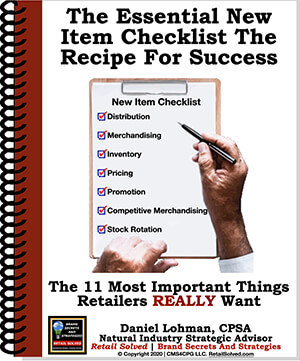
Want A Competitive Edge? The Recipe For Success
New product innovation is the lifeblood of every brand. New products fuel sustainable growth, attract new shoppers and increase brand awareness. Know the critical steps to get your product on more retailer’s shelves and into the hands of more shoppers.
Empowering Brands | Raising The Bar
Ever wish you just had a roadmap? Well, now you do!
Don’t miss out on all of these FREE RESOURCES (strategic downloadable guides, podcast episodes, list of questions you need to be asking, and know the answers to, the weekly newsletter, articles, and tips of the week. You will also receive access to quick and easy online courses that teach you how to get your brand on the shelf, expand distribution, understand what retailers REALLY want, and address your most pressing challenges and questions.
All tools that you can use, AT NO CHARGE TO YOU, to save you valuable time and money and grow your sales today!
Image is the property of CMS4CPG LLC, distribution or reproduction is expressively prohibited.

